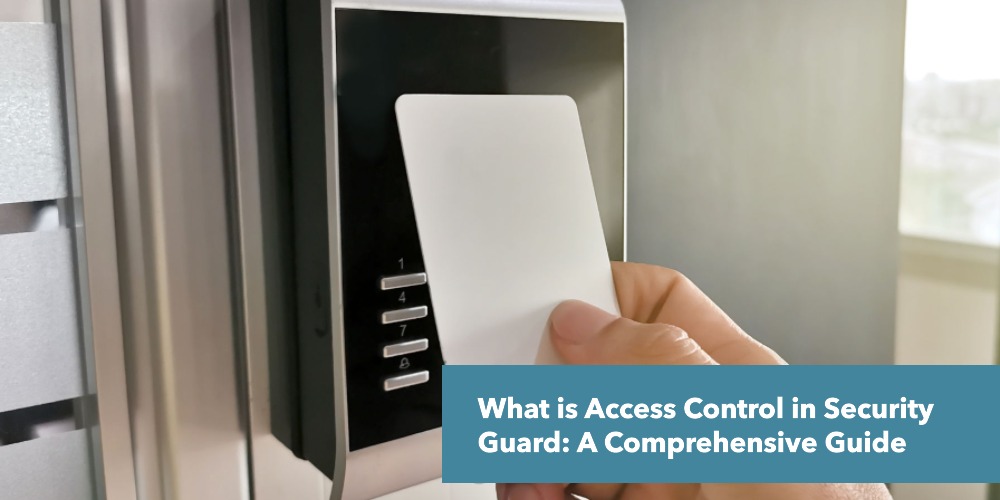Ever wondered who really makes sure only the right people walk through the front doors of busy buildings or big events? That’s the access control security guard’s duty. They’re not just hanging around in a crisp uniform; they’re the ones deciding who gets in, who waits outside, and keeping everything running smoothly, whether you see it or not.
So, what is access control for a security guard? It’s about letting the right folks in and keeping everyone else out, simple, not sloppy. Tools like access control guard tracking software help them stay on top of their patrols and let supervisors double-check everything. Still, a great guard relies on quick eyes, good instincts, and people skills you can’t program.
Let’s break down what this job really looks like and why it still matters.
Roles of the Security Guard in Access Control
Managing Access with Precision
The first thing you see is the guard at the door, but there’s way more to the job than just opening and closing the gate. It’s all about checking who you are, keeping the wrong folks out, and catching stuff that cameras and sensors can’t.
They check ID cards, keep the digital sign-in sheet current, and double-check that you’ve got the meeting you say you do. But the biggest thing is watching how someone behaves. If a person hangs around too long, rides in behind a badge that’s not theirs, or hands over an ID that just doesn’t look right, the guard will notice right away.
Watching Over the Property, Not Just the Screens
The officer’s job doesn’t stop at the doorway. Beyond the access gate, they keep an ear and an eye on the whole site. That means juggling live camera feeds, door sensors, and motion alarms all at the same time. A guard with miles behind them can spot stuff that software skips over: a hallway light that won’t turn off, a door that’s not meant to be open, or a quick flash of a shadow in a no-go zone. Each tiny, weird thing is a quiet signal that calls for a human call, not a digital one.
Being Prepared When It Counts
Emergencies show up without warning. A fight breaks out, someone collapses, or a stranger steps where they shouldn’t, and you have to act on the spot. Guards have the training to lock the area down, guide the crowd to safety, and work hand-in-hand with EMTs and police. When they show up, they turn chaos back into calm, cutting down injuries and keeping everyone as safe as possible.
Patrolling to Catch What Cameras Can’t
Cameras give you an eye in every corner, but they can’t take the place of a guard on the go. With the logbooks in hand, they patrol the outside, checking dark staircases, flat rooftops, and hidden mechanical rooms. Their sharp eyes catch a cut lock, unusual boot marks, or a bag that shouldn’t be there. Digital patrol reports mark off every place they stop, building a record that no dark corner can erase.
Clear Records, Stronger Security
At the end of each shift, thorough, standardized reports are generated. These documents are circulated and examined, not archived in silence. Pattern analysis, anomaly detection, and incident chronologies flow from these records, enabling continuous refinement of protocols and a sharper, more anticipatory security posture.
Thanks to modern digital reporting tools, daily incident summaries can now be augmented with time stamps, observational notes, and photographic documentation. Management can retrieve these records with a few clicks, allowing teams to formulate quicker, more informed responses while continuously refining operational protocols.
Tech That Supports Their Role
Today’s security staff carry more than radios and flashlights. They work in a digital network that makes them more effective and keeps them accountable.
Access control and tracking apps are two of the most useful tools. They let supervisors see where each officer is, check that patrols are done, and spot any missed checkpoints. This setup keeps daily tasks sorted while still letting guards react swiftly when things shift.
Why Guards Are Still Vital in a Digital Age
It’s tempting to think that smart locks and cameras have made people unnecessary. But no machine can match the judgment, experience, and knack for reading people that trained guards bring.
Officers at the access points size up risks on the spot, adapt to new problems, and catch odd details that sensors might miss. Their awareness adds depth to the tech, strengthening the whole security picture.
In Summary
At the end of the day, access control guards are way more than just someone smiling at the entrance. They’re woven right into the whole security system of the place, watching over everything, keeping an eye out, and jumping into action when it counts. They keep daily life moving smoothly and safely, without feeling like an extra hurdle. Even with all the swipe cards and fancy smart locks, that human touch still packs a punch.

